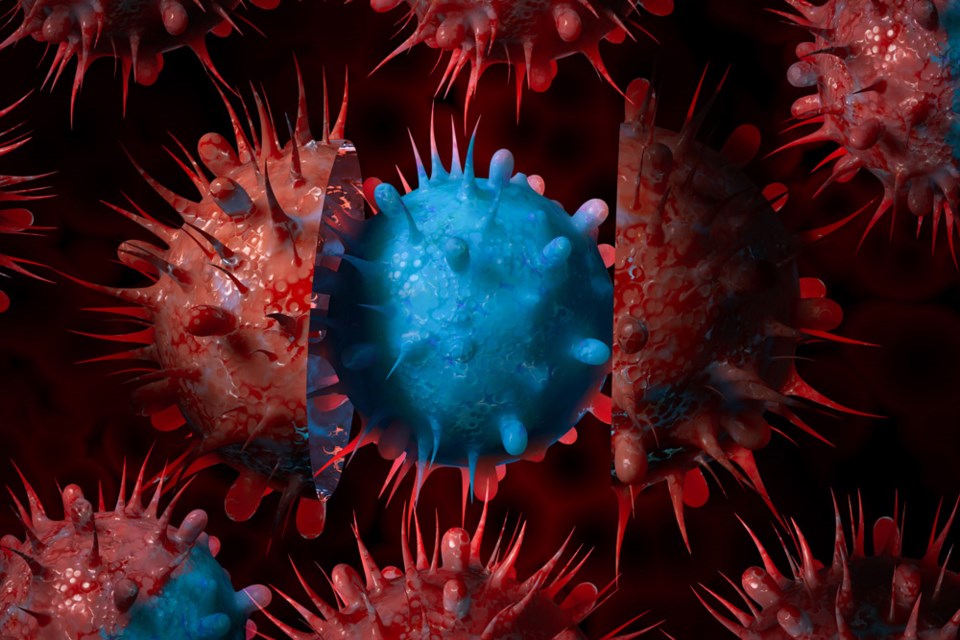If provincial authorities don’t catch up to the best practice preventative measures being taken elsewhere, we are on track for a disruptive and deadly repeat of last fall.
In August of 2022, German Health Minister Karl Lauterbach stated: “It is incompatible with my job as health minister that children are falling ill in large numbers. Infecting an entire generation is irresponsible.”
Unfortunately, such courage, acceptance of science and willingness to adopt best practices to protect children was absent among the ranks of Canadian public health officers and politicians.
In 2022, authorities across Canada had been repeatedly warned of the impending risks that Lauterbach was referencing, and they failed to heed the warnings. In September 2022, Canada was hit with a triple epidemic of COVID, influenza and RSV — viruses that infected schoolchildren and educators, and subsequently their families and communities. Schools set records for absenteeism — between 25 and 50 per cent in many classes — and pediatric hospitals were quickly overwhelmed. Disruption of education, severe disease, chronic long-term health damage and death resulted, much of which could have been minimized with preventative measures.
'Misinformation' has created confusion for parents, educators
If what was done last year to protect Canadian school children failed, why would we get better results doing the same thing in 2023?
Despite the harrowing 2022 experience, this year provincial and territorial health ministers in Canada reopened schools without any additional protections against airborne viruses — simple and relatively cheap measures that also work against toxic wildfire smoke.
Provincial and territorial public health leaders still spread misinformation that confuses and creates resistance to proven best practices. In 2023, they are still promoting hand washing against an airborne disease. Why would parents and educators demand clean air in schools when they are told COVID is transmitted by dirty hands?
It is concerning that new variants are at our doorstep and an updated vaccine is not yet available. Meanwhile, schools have reopened, and only now children six months to four years old have been approved for their first booster. A second booster will finally be authorized for non-high-risk children aged five to 11, more than a year after the first one. If 70 per cent of in-household transmission stems from children, their protection should be everyone’s priority, not an afterthought.
COVID hospital admissions are already trending upward in Canada. Meanwhile U.S. news show us what will be coming our way. Some school districts in Kentucky and Texas have already cancelled in-person classes because of COVID, flu and strep throat only a few weeks into their school year.
Health authorites must acknowledge the latest science
Provincial and territorial authorities must acknowledge the latest science and catch up to the best practice preventative measures used elsewhere. Now is the time to act and protect children, their families and communities from another catastrophic tripledemic.
- SARS-CoV-2 is airborne. It accumulates in crowded, poorly ventilated shared spaces (like classrooms and school buses) and spreads through the air, both near and far, just like wildfire smoke. Hand washing is good public health practice — but almost useless advice for airborne viruses.
- Kids get COVID. They get sick. Some kids die. Kids transmit COVID to their families. The Omicron variant of COVID is not “mild." COVID is not “just a cold." In the second year (2021-2022) of the pandemic, hospitalizations for COVID in zero-to-four-year-olds surged by more than 600% and COVID-19 was the sixth leading cause of hospitalizations. The zero-to-four-year-old children were the “least vaccinated and most infected. ”
- Long COVID is real. Long COVID is rarely mentioned, yet disturbingly common, and under-recognized in children. Children are not spared. In the 11-to-17 age group, a reinfection is just as risky for Long COVID as a first infection. Meanwhile, in adults and children recovered from Long COVID, a reinfection can trigger a relapse.
- Hybrid immunity is a myth. “Hybrid immunity” is the idea that vaccination plus infection produce superior immunity. Not only can you be repeatedly reinfected with vaccine-evading and rapidly evolving new COVID variants, but evidence is growing that each infection seems to weaken your immune system and make you more susceptible to subsequent viruses, bacteria and fungi.
We cannot risk further harm to children. As Karl Lauterbach wisely said last year, “We don’t know yet what this infection does to the children’s immune system when it occurs repeatedly. As a society, we cannot take the risk of mass infection in schools.”
This op-ed was submitted by the Safe Air, Safe Schools/ Air Sain, Ecoles Saines coalition, with the following signatories:
Lyne Filiatrault, MD, Protect our Province BC
Nancy Delagrave, Scientific coordinator of Covid-Stop (Québec), BSc in theoretical physics
Kathleen Gadd, MLIS, Protect our Province NB
Heather Hanwell, PhD MPH MSc, Director, Ontario School Safety
Jennifer Heighton, BSc, Teacher, Safe Schools Coalition BC, Co-Founder Protect our Province BC
Amanda Hu, BA BFA NCT, Fresh Air Schools Alberta
Susan Joudrey, PhD, Protect our Province Nova Scotia
Luc Latulippe, Vancouver DPAC Health & Safety Working Group



